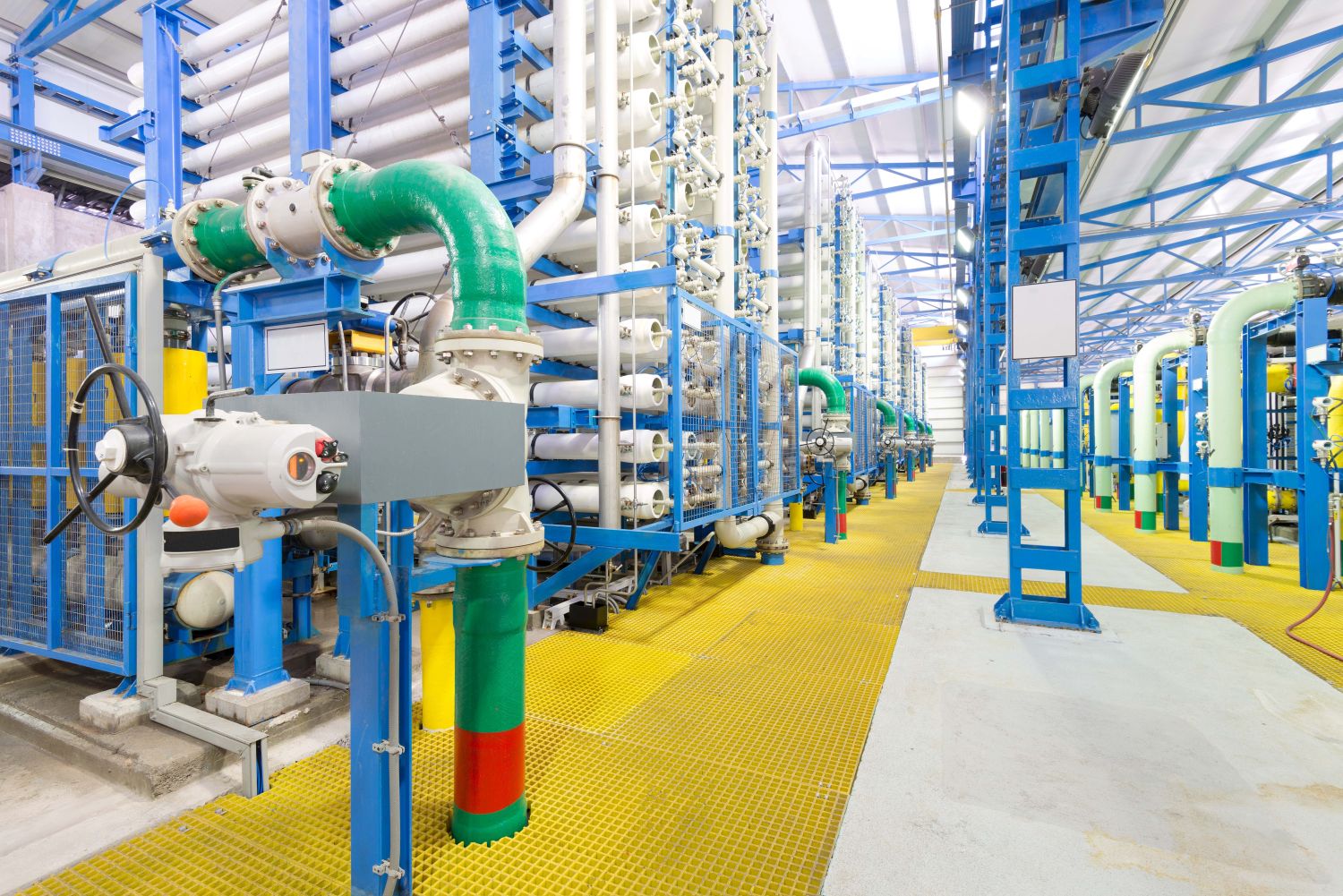Building global solutions to combat water scarcity
As part of a major initiative to combat escalating water scarcity, Spain is set to inject €340 million into the construction of Africa's largest desalination plant in Casablanca. This ambitious project aims to secure a vital clean water supply for nearly 7.5 million people, highlighting the increasing global reliance on desalination as a critical solution to a challenge intensified by climate change, population growth and industrial expansion. With work already 20% complete, the first phase of this massive undertaking is expected to deliver 548,000 cubic metres of water daily by February 2027, writes John Ridgeway.
This initiative underscores a worldwide trend, which finds nations increasingly turning to desalination to meet the surging demand for clean water. Across the globe, desalination is no longer a niche technology, but a cornerstone of water management strategies – a growing industry that potentially provides massive opportunities within construction and engineering.
Water is a fundamental human need, yet access to clean, fresh water is becoming increasingly challenging for many regions worldwide. The global population continues to rise, increasing the demand for water for drinking, sanitation, agriculture and industry. Changing weather patterns, including prolonged droughts, reduced rainfall and increased evaporation, are also depleting freshwater sources, together with rising sea levels that threaten coastal freshwater aquifers with saltwater intrusion.
Furthermore, expanding industrial activities and growing cities require vast amounts of water, often straining existing supplies and leading to pollution of freshwater sources. Agriculture is also a major consumer of freshwater, and inefficient irrigation practices can exacerbate water scarcity.
These factors have led to a situation where many regions face water stress, defined as the condition where water demand exceeds the available supply during a certain period, or when poor quality restricts its use. According to the European Commission, almost one-fifth of the world's population lives in areas of water scarcity, a problem that is predicted to worsen. The United Nations estimates that by 2025, two-thirds of the world's population will be affected by water scarcity.
Protecting rivers and lakes
All this means that desalination, the process of removing dissolved salts and minerals from saline water (seawater or brackish water) to make it potable, offers a solution to this crisis. By providing an alternative source of freshwater, this process can augment traditional freshwater sources like rivers, lakes and groundwater, ensuring a more reliable supply, especially in arid and semi-arid regions.
The project in Casablanca, funded by Spain, is a prime example of how desalination can address water scarcity and improve the lives of millions. As reported, the plant will supply clean water to nearly 7.5 million people, demonstrating the large-scale impact of such projects. It is the latest of many such contracts around the world.
While the Middle East and North Africa have historically been the leaders in desalination, other regions are rapidly adopting this technology. Countries such as Saudi Arabia, the United Arab Emirates, Kuwait and Israel, have long relied on desalination to meet their water needs due to arid climates and limited freshwater resources. The MENA region accounts for a significant portion of the world's desalination capacity. Saudi Arabia, for instance, is a world leader in desalination, producing a substantial fraction of the world's desalinated water. The Ras Al Khair plant in Saudi Arabia is one of the world's largest desalination plants.

Australia has invested heavily in desalination, particularly in major cities like Perth, Adelaide, Melbourne, and Sydney. These plants provide a crucial buffer against water shortages. Desalination is also playing an increasingly important role in the US, particularly in water-scarce regions like California and Texas. The Carlsbad Desalination Plant in California is one of the largest in the Western Hemisphere.
In Asia countries like Singapore, China, and India are turning to desalination to supplement their water supplies and meet the demands of growing populations and economies. Singapore, in particular, has made significant investments in desalination as part of its water management strategy. China has also been rapidly increasing its desalination capacity, with numerous plants being built to address water shortages in various regions
Southern European countries like Spain, Cyprus, and Malta are increasingly relying on desalination to cope with water scarcity, especially during the dry summer months and countries like Chile and Peru are using desalination to support their mining industries and provide water to communities in arid regions.
According to the European Commission, the global installed capacity for desalination has increased significantly, with an average growth rate of about 7% per annum since 2010.
The costs involved in desalination
However, while desalination offers a valuable solution to water scarcity, it is not without its challenges. One of the primary concerns is the cost involved. Desalination plants require significant capital investment for construction, as well as ongoing operational costs for energy, maintenance and chemicals.
The cost of desalination can vary depending on several factors, such as the type of desalination technology used (e.g., reverse osmosis, thermal desalination). Reverse osmosis is currently the most widely used technology due to its relatively lower energy consumption, but advancements are continuously being made. Larger plants generally benefit from economies of scale, resulting in lower per-unit costs.
Energy is also a major component of desalination costs, particularly for energy-intensive processes like thermal desalination. The cost of energy can vary significantly depending on the region and energy source.
Furthermore, the salinity and quality of the feedwater (seawater or brackish water) can affect treatment costs. Seawater desalination is generally more expensive than brackish water desalination due to the higher salt concentration.
Despite the costs, desalination is becoming increasingly cost-competitive with traditional water sources in many regions, especially as technology improves and freshwater sources become scarcer and more expensive to develop. The cost of desalination has decreased significantly over the years due to technological advancements, making it a more viable option for many countries and municipalities.
Future developments in desalination
All this means that the future of desalination is bright, with ongoing research and development focused on improving efficiency, reducing costs and minimising environmental impacts. Research, for example, is underway to develop more efficient and durable membranes for reverse osmosis, which can reduce energy consumption and increase plant lifespan.
Improved energy recovery devices, which can capture and reuse energy from the desalination process, is further reducing energy consumption and costs. Integrating desalination plants with renewable energy sources like solar and wind power can also reduce reliance on fossil fuels and decrease the carbon footprint of desalination. The Al Khafji plant in Saudi Arabia, for example, is powered by photovoltaic panels.
Combining different desalination technologies or integrating desalination with other water treatment processes can further improve efficiency and reduce costs and nanomaterials and nanotechnology are being explored for their potential to enhance membrane performance and improve desalination efficiency. These advancements promise to make desalination an even more sustainable and cost-effective solution to water scarcity in the years to come.
Desalination and the construction and engineering markets
Desalination projects are, of course, closely linked to the construction and engineering markets and require a wide range of expertise and resources. Engineering firms, in particular, play a crucial role in the planning and design stage, providing expertise in civil, mechanical, electrical and environmental engineering.
The construction phase involves building the plant infrastructure, including intake structures, pipelines, treatment facilities and outfall structures. This requires the involvement of construction companies, contractors and specialised equipment suppliers.
Desalination plants require specialised equipment, such as pumps, membranes, pressure vessels and energy recovery devices. This creates a market for manufacturers and suppliers of this equipment.
Once the plant is operational, ongoing maintenance and repairs are also necessary to ensure its efficient and reliable performance. This provides opportunities for service providers and maintenance companies.
The construction and engineering markets therefore benefit significantly from the growth of desalination projects worldwide. These projects create jobs, stimulate economic activity, and drive innovation in water treatment technologies. The development of large-scale desalination plants, like the one in Casablanca, requires significant investment in infrastructure and technology, contributing to the growth of these markets.
The desalination sector is expected to continue to grow in the coming years, driven by increasing water demand and decreasing costs. All this means that such growth will create further opportunities for construction and engineering companies involved in the design, construction and operation of desalination facilities.
Additional Blogs

Why good contractors are walking away from bad projects
There is a growing change happening across the construction industry, one that many clients still have not fully recognised. Highly competent, reputable contractors are increasingly walking away from...
Read moreWhen fire breaks out who really knows the system
The story that caught my attention recently wasn’t about fire growth or building loss, it was about confusion. Specifically, the confusion faced by the fire service when arriving at buildings...
Read more

The design and development of Nexus Layouts
When Zentia set out to rethink the suspended ceiling, the brief was clear: deliver greater creative freedom for designers, more distinctive visual identity for clients, and a solution that could keep...
Read more